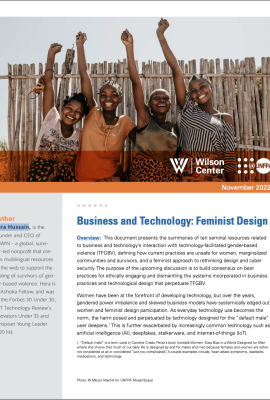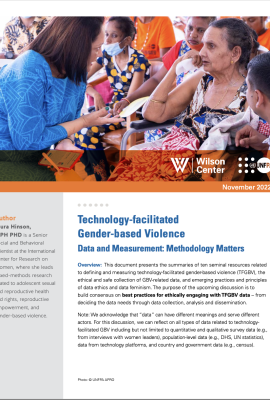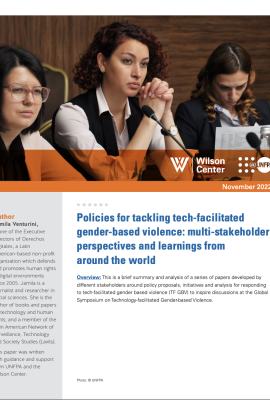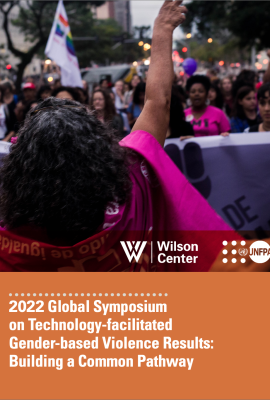Global Symposium on Technology-facilitated Gender-based Violence
Technology and digital spaces provide extensive opportunities through their contribution to women’s empowerment and ending gender inequalities. However, technology products and platforms are also spaces and tools which can be wielded, either with or without intention, to cause harm. They enable gender-based violence to be committed, assisted, aggravated and amplified. Technology-facilitated gender-based violence (TF GBV) targets all women but is particularly pervasive among those women and girls with intersecting identities . Further, women who use technology and digital spaces in their professional lives, such as journalists, activists and politicians, are disproportionately targeted with TF GBV. This has a detrimental silencing effect and serious consequences for democracies and societies.
From November 29 to December 1, 2022, the Wilson Center's Science and Technology Innovation Program and the United Nations Population Fund (UNFPA) held a three-day expert symposium on technology-facilitated gender-based violence (TF GBV) with stakeholders from civil society, academia, the technology industry, government, regulation, and intergovernmental organizations and representatives from every continent, including over 25 countries. These publications are a product of the converging of stakeholders to discuss where we are now in terms of preventing technology-facilitated gender-based violence, and where the processes of collecting data, the methods of measurement, creating and improving technology, and crafting policies needs to go.
More of UNFPA's work on TF GBV can be found here.
Background on the Project
-
Prevalence of TF GBV
-
Global Symposium Information
Explore more related to this collection

Science and Technology Innovation Program
The Science and Technology Innovation Program (STIP) serves as the bridge between technologists, policymakers, industry, and global stakeholders. Read more






